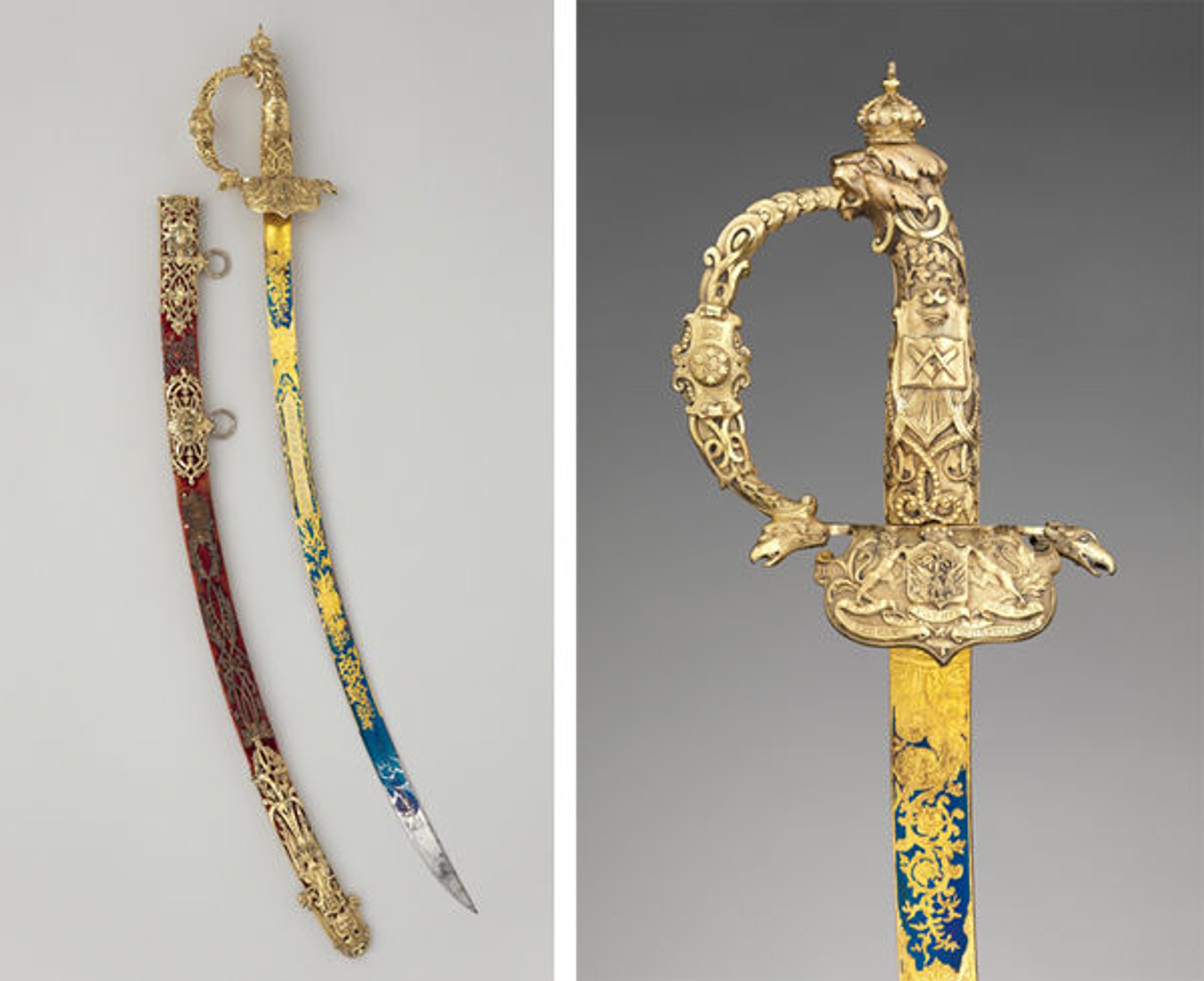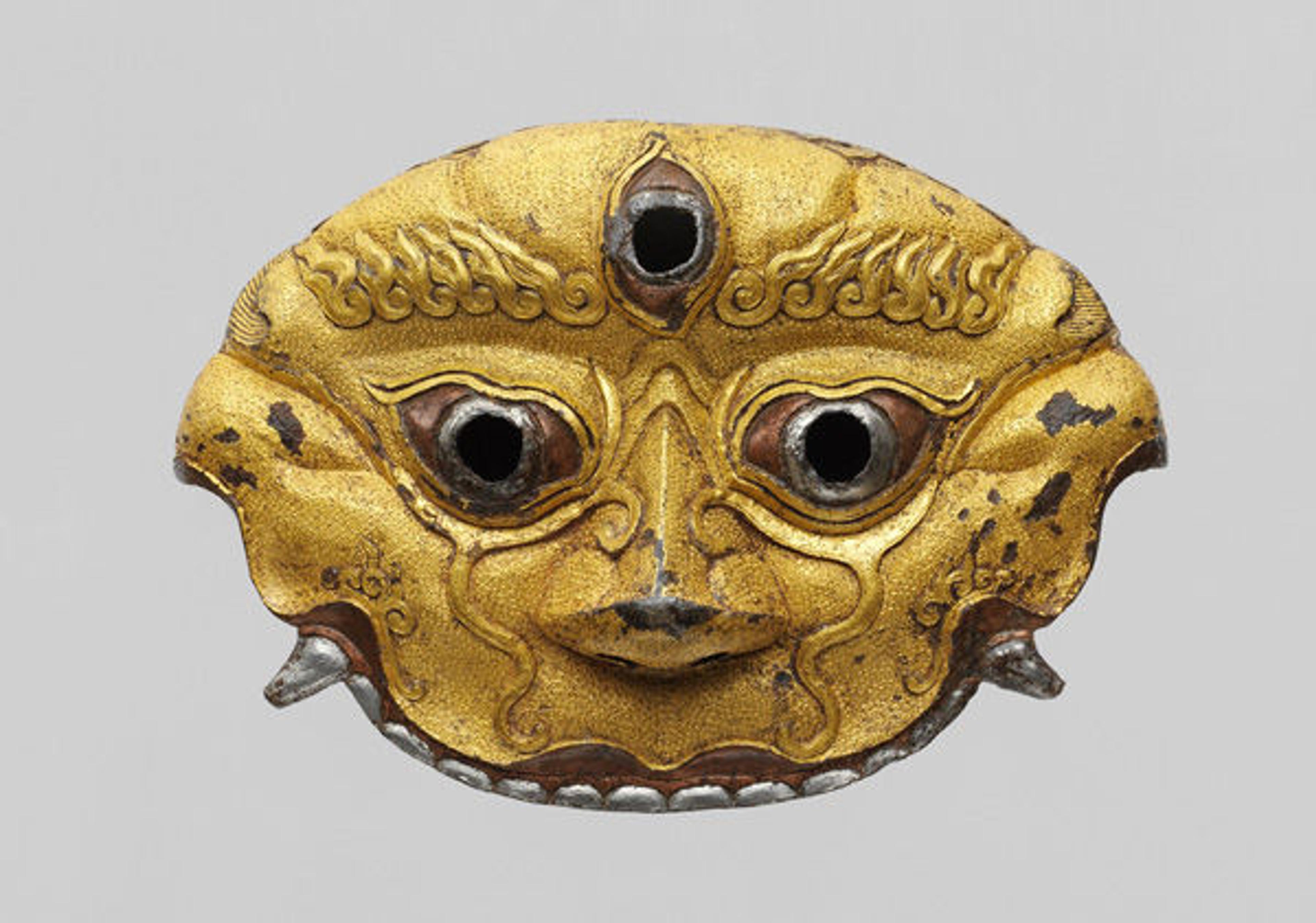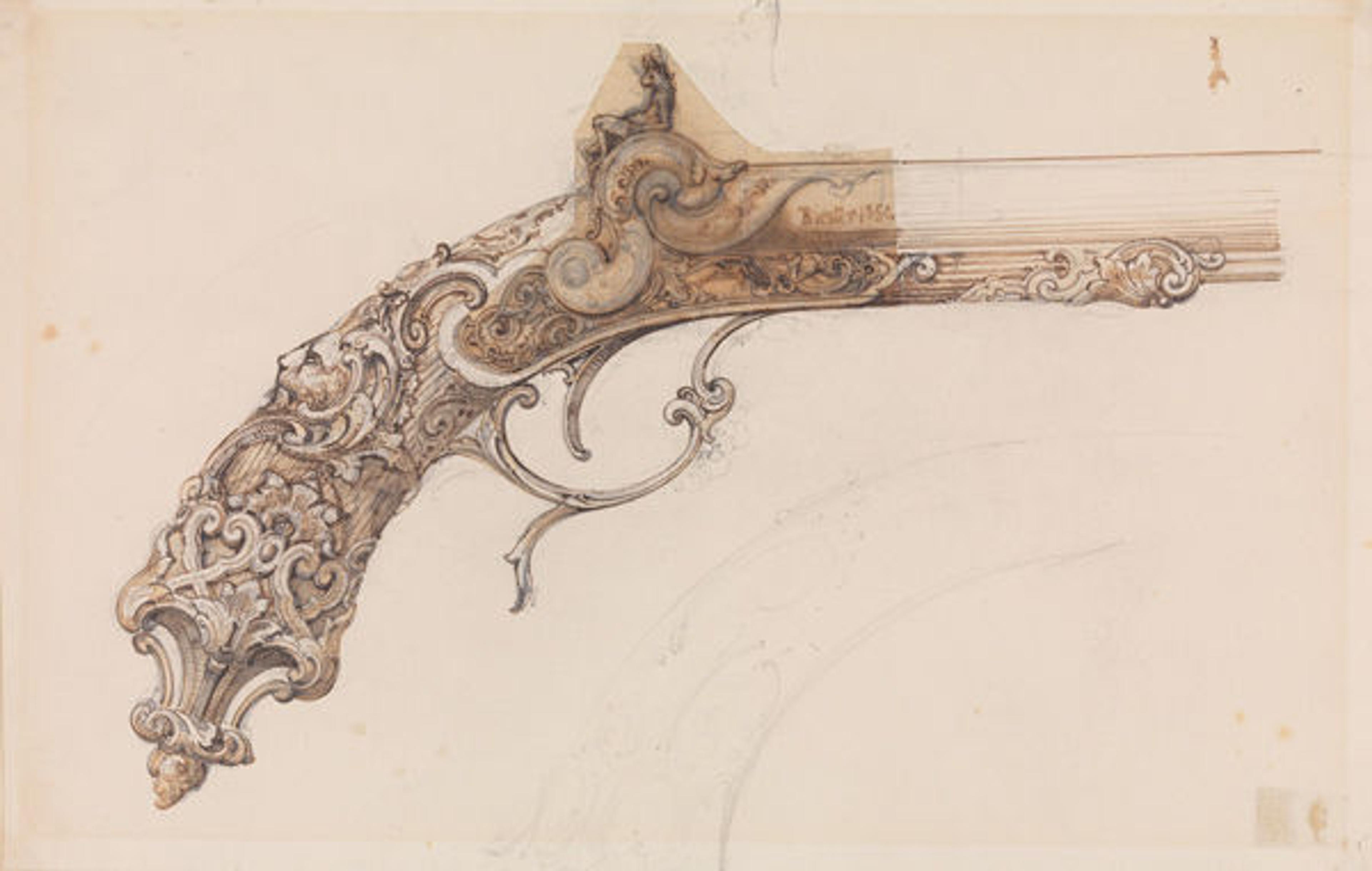
Breastplate with Tassets (full object, at left, and detail, at right), ca. 1530. German, Augsburg. Steel, copper alloy, leather; Weight. 11 lb. 6 oz. (623.7 g). The Metropolitan Museum of Art, New York, Purchase, The Sulzberger Foundation Inc. Gift, 2013 (2013.28)
«In the exhibition Arms and Armor: Notable Acquisitions, 2003–2014, on view from November 11, 2014, through December 6, 2015, the Department of Arms and Armor is reflecting on its recent growth and development. Between 2003 and 2014, about three hundred objects were added to the collection, many of which have been put on permanent display in the Arms and Armor galleries; the exhibition highlights about forty other acquisitions from this period that, for the most part, are unpublished and have never before been on display.»

Sword with Scabbard of Faustin I (1782–1867), Emperor of Haiti (sword and scabbard, at left, and detail of hilt, at right), 1850. British, Birmingham. Steel, silver, gold, wood, textile. The Metropolitan Museum of Art, New York, Bequest of William S. Delafield Sr., 2012 (2012.204a, b)
The Museum's permanent collection of arms and armor began with a relatively random assortment of objects acquired in the 1880s and 1890s. Between 1904 and the mid-1940s, in approximately forty years of intense and carefully directed activity, the collection grew rapidly to include over twelve thousand items from Europe, the Middle East, India, Southeast Asia, China, Japan, and the United States, in the process becoming one of the finest and most encyclopedic collections in the world. Over the past sixty to seventy years, we have continued to grow at a more measured pace to the present total of nearly fourteen thousand pieces.

Sword Guard, 14th–15th century. Tibetan or Chinese. Iron, gold, silver, copper. The Metropolitan Museum of Art, New York, Gift of the Kronos Collections, 2014 (2014.533)
The selection of objects in the exhibition purposely emphasizes the multicultural and interdisciplinary nature of the department's collection, with each example conveying something unique about its region, era, genre, or type. It includes the well-established categories of finely decorated armor and edged weapons and firearms, but goes beyond that to feature lacquer, leather, works on paper, and other unexpected materials. Gathering together such a varied group of noteworthy pieces in one gallery provides a unique opportunity to compare them across geographic, temporal, and stylistic boundaries, and reinforces the point that arms and armor, as universal art forms, have existed in virtually all cultures throughout history.

Martin Riester (French, 1819–1883). Design for a Percussion Pistol, dated 1850. French, Paris. Pen, ink, pencil, paper. The Metropolitan Museum of Art, New York, Purchase, James C. Meade Gift, 2012 (2012.138)
This is the first in a series of blog posts by Met curators and conservators on specific works of art or other aspects of Arms and Armor: Notable Acquisitions, 2003–2014. You'll be able to follow along by viewing all posts tagged "Arms and Armor: Notable Acquisitions, 2003–2014."